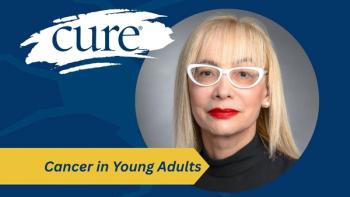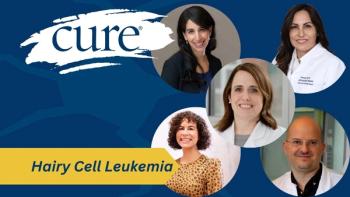
Cancer Survivors Face Challenges and Must Find Solutions
Key Takeaways
- Cancer survivorship is increasing, with projections of 26.1 million survivors by 2040, necessitating comprehensive care strategies.
- Survivorship care now includes monitoring for secondary cancers, late organ toxicity, and psychological impacts, beyond recurrence surveillance.
Both oncologists and primary care physicians do not provide adequate care to fully address cancer survivorship needs. Learn about why and solutions for people in their cancer journey.
As a 19-year brain tumor survivor diagnosed in 1998 when I was 24 years old, I’ve found some survivor statistics insightful. As of January 2016, it was estimated that there are 15.5 million cancer survivors in the United States, which represents 4.8 percent of the population. Moreover, the number of cancer survivors is projected to be 20.3 million by 2026, and 26.1 million by 2040. In 2016, 67 percent of survivors lived five years or more after diagnosis; 44 percent have survived 10 years or more; and, 17 percent survived 20 years or more.
Cancer patients who receive treatment need ongoing support, and oncologists must provide quality cancer care from diagnosis through the balance of life. In the past, physicians viewed survivorship care as largely confined to surveillance for cancer recurrence. As Kevin Oeffinger, M.D., at Duke University and a spokesperson for the American Society of Clinical Oncology recently told MedPage Today, some oncologists ultimately expanded care to include “surveillance for another cancer secondary to the treatment of the original cancer, late organ toxicity from the original regimen and psychological toxicities including financial toxicity from the cost of cancer therapy.” 1
Along with their oncologists, cancer survivors need support from their general practitioner who knows about cancer survivorship and can address some challenges. A recent article in JAMA Internal Medicine showed that in a comparative case study of 12 advanced primary care practices in the United States, none of them offered any form of comprehensive cancer survivorship service. 2 Those problems have been recognized for a while.
Indeed, the Institute of Medicine (IOM) over 10 years ago released a seminal report, From Cancer Survivor: Lost in Translation, which outlined components of high-quality survivorship care. It explains that implementation of the IOM recommendations relied on the availability of well-informed and responsive primary care survivorship clinicians; however, those improvements have not been incorporated. Some leaders aspire to address gaps, including through the first annual survivorship symposium in 2016 organized by the American Society of Clinical Oncology (ASCO), American Academy of Family Physicians, and the American College of Physicians. Unfortunately, a recent JAMA Internal Medical article emphasizes that challenges continue: “Primary care clinicians continue to struggle with how to think about cancer survivors or offer high-quality survivorship care, suggesting either inadequate reach or ineffective technique of current educational initiatives and survivorship guidelines.” 3
For some cancer survivors conducting research, educational information about survivorship comes from various resources such as the National Cancer Institute Office of Cancer Survivorship, Cancer.Net from ASCO and the American Cancer Society. As each individual recognizes, the information cannot address all needs.
How can cancer survivors find optimal support and solutions for their survivorship? The reality is that cancer survivors benefit from other sources and strategies.
Fortunately, some hospitals and practices have clinics offering other cancer survivorship approaches such as social workers or psychologists, support groups, acupuncture, nutrition, supplements, meditation, music therapy, art classes and other types of help from complementary or integrative therapies. Yet, some therapies are not available in every hospital or practice, and sometimes there is nothing at all. Other places like clinics and individual providers can provide assistance, but they do not focus on every dimension of whole person care.
Through my own personal and professional journey as a long-term cancer survivor, I’ve gained clarity from scientific findings that integrative cancer care for the whole person improves quality of life, cancer survival, and cancer prevention. The process addresses the physical body, mind-body connection, spiritual vitality, social support and a cleaner environment.
Since studies indicate that only 5 percent to 10 percent of all cancers are caused by inheritance of mutated genes and somatic mutations, the remaining 90 percent to 95 percent has been linked to lifestyle factors and environment.4 To find solutions, it’s paramount for cancer survivors to engage in their quest to thrive using integrative cancer care for the whole person.
Cancer survivors benefit from having an integrative cancer care team, plan, and self-care strategies, which helps to understand and incorporate integrative whole person transformation. Now is the time to find out more and improve your cancer survivorship.
[1] Cancer Survivors Don’t Get Adequate Primary Care, Pam Harrison in MedPage Today, September 27, 2017.[2] Rubinstein EB, Miller WL, Hudson SV, Howard J, O’Malley D, Tsui J, Lee HS, Bator A, Crabtree BF. Cancer Survivorship Care in Advanced Primary Care Practices: A Qualitative Study of Challenges and Opportunities. JAMA Intern Med. Published online September 25, 2017. doi:10.1001/jamainternmed.2017.4747[3] Tonorezos ES, Conigliaro J. Integration of Cancer Survivorship Care and Primary Care Practice. JAMA Intern Med. Published online September 25, 2017. doi:10.1001/jamainternmed.2017.3132[4] Anand P, Kunnumakkara AB, Sundaram C, Harikumar KB, Tharakan ST, Lai OS, Sung B, Aggarwal BB. Pharm Res. 2008 Sep;25(9):2097-116. doi: 10.1007/s11095-008-9661-9. Epub 2008 Jul 15. Review. Erratum in: Pharm Res. 2008 Sep;25(9):2200.




